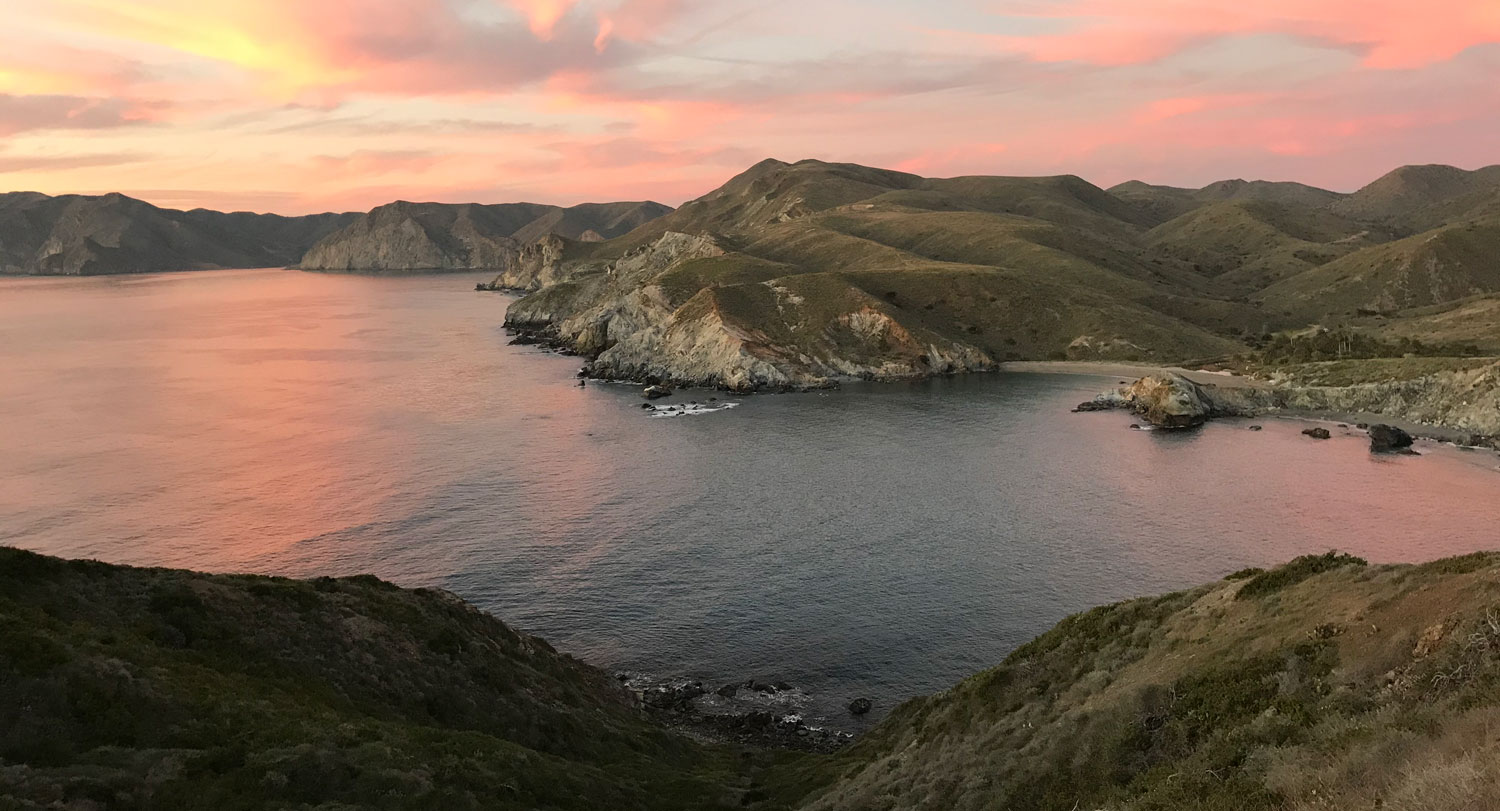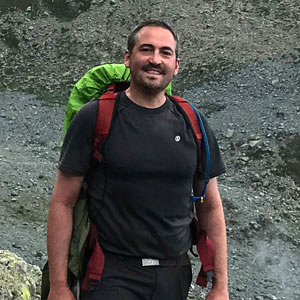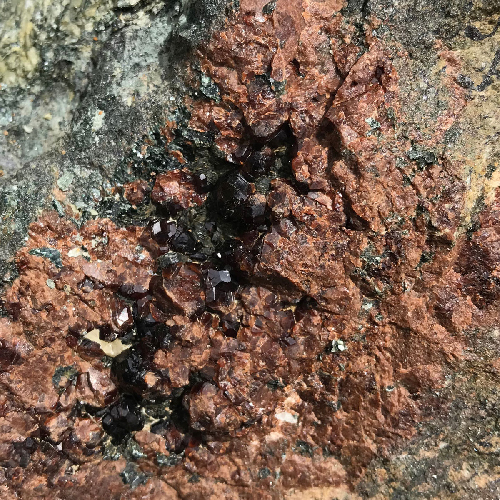
Most people have favorites: flavors of ice cream, sports teams, seasons, colors, songs and movies, too.
McCausland Fellow Besim Dragovic has something many of us may not — a favorite mineral. It’s garnet, of course.
What started decades ago as a career in cement and concrete research eventually led him to study one of nature’s more interesting minerals.
Many people recognize garnet as January’s birthstone or, around USC, as one of the school colors. Less widely known, however, is that garnet is a mineral that carries a wealth of information about unique locations on Earth and their history.
Dragovic, a geochronologist and assistant professor in the School of the Earth, Ocean and Environment at the College of Arts and Sciences, collects rock specimens containing garnet from around the world.
By studying the substances trapped inside the rust-colored rocks, Dragovic can detect if and when past events like mountain building, earthquakes and volcanoes occurred in a region. This information is used to help scientists predict or more closely monitor natural hazards.
The study of rocks containing garnets has also revealed that plate tectonics — the scientific theory that explains how Earth’s landforms are created and how they move relative to each other — along with the presence of water, may be important ingredients for a habitable planet.
While understanding the movement of Earth’s crust is not new, Dragovic is digging deeper into when this movement started in Earth’s history and how it could have aided a chain reaction that brought about life on Earth.
Rocks as time capsules
Similar to rings on tree trunks, garnets record history in chemical zones within the mineral. The concentric zones show characteristics of the time period in which they formed. They can indicate the depth and atmospheric temperature, as well as a potential history of the Earth’s climate and major tectonic events.
While some other minerals can also capture this type of information, garnet makes it possible to measure when an event was literally set in stone.
“Garnet is a recorder of Earth's deep history, and it can help us answer a lot of questions,” Dragovic says. “Now we have the innovative techniques to be able to assess time more precisely than we ever have before.”
Much of Dragovic’s research is performed at USC’s Center for Elemental Mass Spectrometry.
To determine a garnet specimen’s age, Dragovic uses radioactive isotopes and rates of decay in a process known as geochronology. Through this process, prior researchers have found garnets that formed around 2.5 billion years ago started showing previously unseen types of matter, particularly evidence of an oxygen-rich atmosphere.
How and why did oxygen suddenly start appearing in the rocks? That’s where the other half of Dragovic’s research comes into play.
Tectonic movement brings life
Dragovic’s work takes him to areas where mountains have formed in the Italian Alps, Canada, the Greek Islands and Southern Appalachia, where garnet is ubiquitous.
Conditions are right for finding garnet where tectonic plates, the large slabs of rock that divide the Earth’s crust, move over each other. The plate on top rises to form a mountain, bringing various rocks and minerals with it. That’s where garnet is found.
By examining the chemicals present in garnet, geochronologists have learned that tectonic movement wasn’t always present. It started a few billion years ago, though they’re still unsure how.
What they do know is that when tectonics started, so did evidence of life.
"Two and a half billion years ago, there wasn't much of anything going on besides some whiffs of oxygen,” Dragovic says. “The emergence of plate tectonics coincides with increased oxygen levels in the atmosphere.”
Much of early life existed on the ocean floor, and rocks there were intimately linked with biological activity, he says. For that reason, Dragovic spent part of the spring semester in New Zealand studying garnets that came from what was once the ocean floor, some 250 million years ago.
The trip, supported by the National Science Foundation, allowed Dragovic and his team to learn more about early ocean floor processes by examining fluids and elements trapped in the rocks.

“The value of geology education is that it teaches us not only how the Earth works, but also how we can be its best stewards.”
Can rocks help us go green?
Element-containing rocks hold several possibilities for sustainability. The storage of geological history gives scientists clues about what has made, and can continue to make, Earth a habitable planet. Additionally, knowledge of how fluids and elements can be trapped in rocks may be helpful for addressing changes in our climate.
“We can think about these types of reactions for sequestering carbon dioxide for mitigating the impacts of climate change,” Dragovic says.
To sequester or capture carbon dioxide in solid form, known as carbon mineralization, could allow for its long-term storage, meaning less of it in the atmosphere. The technique could be an option for safely storing nuclear waste as well, Dragovic says.
Knowing how plate tectonics affect Earth systems means there is potential to use tectonics as a predictor of future natural catastrophes. In the face of a rapidly changing climate, having extra time to prepare for a coming natural disaster is invaluable.
Beyond our own solar system, Dragovic says understanding plate tectonics could go a long way in knowing where to look for life on other planets. Where scientists previously knew to look for liquid water as a requirement for sustaining life, they now know that active tectonics also play a role.
“The value of geology education is that it teaches us not only how the Earth works, but also how we can be its best stewards,” Dragovic says.
“I feel blessed that I get to go to cool places to look at rocks and try to understand Earth's history.”
